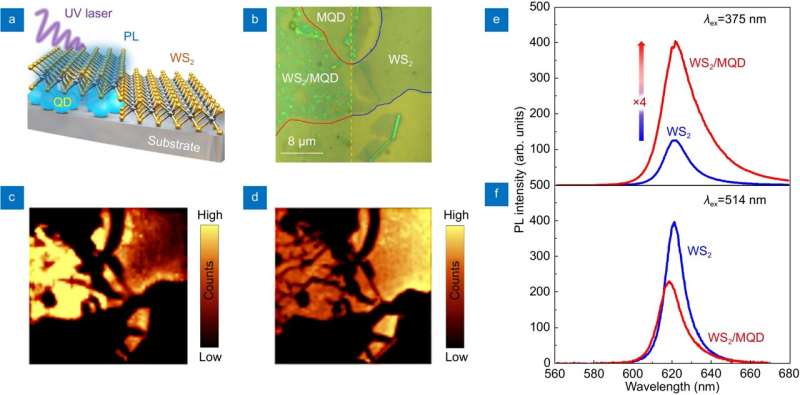This article has been reviewed according to Science X's editorial process and policies. Editors have highlighted the following attributes while ensuring the content's credibility:
fact-checked
proofread
Super-resolution machining of single crystalline sapphire by femtosecond laser-induced, plasma-assisted ablation

A new study in Opto-Electronic Advances discusses super-resolution machining of single crystalline sapphire by GHz burst mode femtosecond laser-induced plasma assisted ablation.
GHz burst-mode femtosecond (fs) laser, which emits a series of pulse trains (burst pulse) with extremely short intervals of several hundred ps, offers distinct characteristics in materials processing as compared with conventional fs laser (single-pulse mode). The authors of the new study have demonstrated that the GHz burst mode fs laser greatly improves ablation efficiency, quality and speed. GHz burst mode fs laser was further applied to surface nanostructuring, showing formation of unique two-dimensional (2D) periodic surface structures different from 1D structures fabricated by the single-pulse mode.
The authors took advantage of the distinct features of GHz burst mode fs laser for super-resolution machining of single crystalline sapphire by this original technique, termed laser induced plasma assisted ablation (LIPAA). The single crystalline sapphire is an attractive material for a variety of industrial applications due to its excellent characteristics such as high-transparency in a visible range, high hardness, and good thermal resistivity.
However, the excellent characteristics make high-quality, high-precision processing of sapphire difficult. In the LIPAA process, a substrate that is transparent to the laser beam is placed on a metal target such as copper. The interaction of laser beam and plasma generated from the target performs high efficiency ablation of the rear surface of transparent materials.
GHz burst mode fs laser LIPAA enables direct interaction of the plasma induced by the preceding laser pulses with the subsequent laser pulses due to the moderate interval of each pulse in the burst pulse, achieving higher ablation efficiency and quality as well as better fabrication resolution. Thus, it demonstrates the potential of GHz burst mode fs-LIPAA for high-quality, high-efficiency microfabrication of single crystalline sapphire substrates.
GHz burst-mode fs laser emits a series of pulse trains with extremely short intervals of several hundred ps. Here, the single pulse train is called burst pulse, and each pulse in the burst pulse is called intra-pulse. In the experiments, a single crystalline sapphire substrate was placed in contact with a copper target, and a single burst pulse was irradiated to the copper target through the sapphire substrate. The moderate pulse interval in the GHz burst pulse could enable direct interaction of the subsequent laser pulses with plasma generated by the preceding laser pulses at the interface of sapphire substrate and copper target.
For the GHz burst LIPAA process, the ablation depth depends on the intra-pulse fluence, and the number of intra-pulses, P. Naturally, variations of ablation depth on intra-pulse energy show that the higher intra-pulse fluence leads to increase of the ablation depth. Importantly, the ablation depth drastically increases at the intra-pulse number of 5. The time interval between 1st intra-pulse and 5th intra-pulse is about 1 ns.
The reason for the drastic increase in ablation depth is thought to be that the plasma density becomes high enough to contribute LIPAA process at around 1 ns after the first intra-pulse irradiation. Specifically, in the case of Cu ablation, it is known that generation of the laser-induced plasma starts from 10–50 ps after the laser pulse irradiation, and its density is then maximized at around 1 ns, at which the fifth pulse can efficiently interact with the plasma to drastically increase the ablation depth.
The authors further found that the ablation threshold decreases to 1/7.3 as compared with the single-pulse mode fs laser direct ablation. In addition, the ablation depth was increased by a factor of 4.2–5.0, compared to that of the single-pulse mode LIPAA. Importantly, the increased absorption further allowed achieving much better ablation quality. Furthermore, the GHz burst mode LIPAA process improves the fabrication resolution far beyond the focused laser spot size due to the synergetic contribution of threshold effect and higher plasma density closer to the center of laser beam.
Thus, it can be concluded that the GHz burst mode LIPAA process provides the ability to realize micro- and nanofabrication of sapphire with high processing efficiency, high processing quality, and high fabrication resolution. This process can be further extended to processing of other transparent materials. The use of shaped beams such as Bessel beam and vector beam will enhance the performance of LIPAA in terms of fabrication geometry, resolution and efficiency.
More information: Anir S. Sharbirin et al, Highly enhanced UV absorption and light emission of monolayer WS2 through hybridization with Ti2N MXene quantum dots and g-C3N4 quantum dots, Opto-Electronic Advances (2024). DOI: 10.29026/oea.2024.240029
Provided by Compuscript Ltd



















